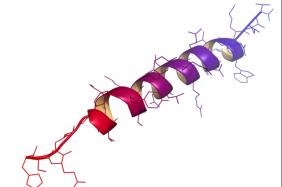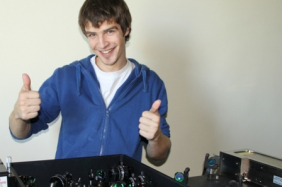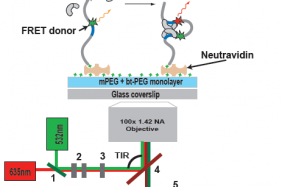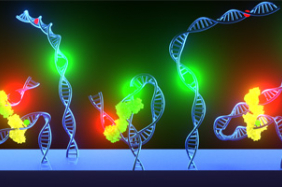Science
- Home
- Science
- Excellence
- Organic materials and nanoenginering
-
Excellence
- Advanced materials and technologies
- Surface chemistry and nanotechnology
- Photonic and Laser Technology
- Metrology and measurement technology
- Environmental Research and energetics
- Organic materials and nanoenginering
- Electrochemical energy conversion technologies
- Research of the structure and composition of solid materials
- Long-Term Programs
- Scientific publications
- Conferences
- Projects
Organic materials and nanoenginering
Molecular materials and organic and inorganic nanostructures are increasingly being used in the development of optoelectronic devices, in the creation of "smart" materials, nano- and biotechnologies. Organic materials also increasingly penetrate into electronics—the field totally dominated by the inorganic semiconductors so far. Unlimited variety of organic molecules as well as a broad range of technological fabrication abilities promise a wide spectrum of device characteristics. On the other hand, applications require detailed understanding of molecular properties determining characteristics of molecular-based materials and, thus, stimulate scientific activity in this field. These investigations are mainly performed in three departments of FTMC.
Department of Nanoengineering has built its competence around synthesis and manipulation of nanometer-scale materials and structures. The multidisciplinary team has been engaged in projects focusing on systems such as self-assembled monolayers, cell membrane, protein and peptide aggregates, graphene, conductive polymers, nanoparticles, and others. Surface chemistry, photochemistry and supramolecular chemistry techniques and methodologies are well developed and employed in registry with photolithography, soft lithography and scanning probe-based manipulation and writing. The staff is skilled in analytical techniques such as fluorescence microscopy and spectroscopy, surface plasmon resonance and nanoplasmonics, imaging ellipsometry, electrochemistry, atomic force microscopy (AFM). In particular, strong competence is available in AFM technology, including advanced analysis, as well as hardware and electronics development. The primary applications in focus are cell chips and biochips, hydrogel and other biomaterials, sensors and bioanalytics. The team has been working for more than a decade in collaboration with medical scientists and clinicians, a link that allows rapid evaluation of nanomaterials and devices in the clinical perspective. Also, the department has built a laboratory and has know-how for investigations of cell/tissue and biomaterial/nanostructure interactions.
The spectroscopy complex developed in the Department of Molecular Compounds Physics consists of a series of stationary and kinetic ultrafast spectroscopy devices that allow detailed characterisation of the electronic properties of molecular compounds and light-induced processes taking place on a broad time scale from femtoseconds to minutes and hours. Various optical microscopy methods have also been developed in the department, including non-linear coherent anti-Stokes Raman scattering and second optical harmonic microscopy. When investigating processes in optoelectrical devices, spectroscopic investigations are combined with electrical ones. In order to clarify the processes in more details, studies are often carried out at different temperatures; it is possible to cool the samples down to 10K. In addition to experimental studies, theoretical studies on processes and properties of molecular complexes are also carried out.
Structure and function of organic molecules and nanocompounds at electrochemical interface are carried out in Department of Organic Chemistry by using surface vibrational spectroscopy approaches (SERS, surface enhanced IR absorption spectroscopy (SEIRAS), and sum frequency generation spectroscopy). The synthesis of new organic compounds for research in areas of chemistry, biochemistry, pharmacology, physics, material sciences, nanoscience, optoelectronics and the development of new synthetic methods are carried out.
Using the available expertise, methodologies will be further developed and applied for the study of processes in functionally active molecular materials and complexes, new materials will be created and molecular electronics and sensor technologies will be developed.
These problems are considered in three departments:
- Department of Molecular Compounds Physics (head prof. V. Gulbinas)
- Department of Nanoengineering (head dr. R. Valiokas)
- Department of Organic Chemistry (head dr. L. Labanauskas)



